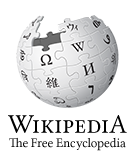The imaginary unit, represented by the lower-case letter (or possibly , or even the Greek letter [iota]), is the basis of the imaginary number line, or imaginary continuum.
It is typically defined as a solution of the quadratic equation
- ,
or equivalently,
- .
Since this is not possible using real numbers, the solution is simply assumed to exist. By the usual understanding of the square root, the solution could be either of
or
- .
However, because the square root of a negative number is undefined in the real numbers, there is no way to distinguish between these two values. Fortunately, one need not decide which value "really" represents the imaginary unit, since all mathematical statements are just as valid when is replaced by .
By considering all real multiples of the imaginary unit (that is, , where is any real number), one arrives at the set of imaginary numbers.
Furthermore, the set of all sums of real and imaginary numbers constitutes the complex numbers.
See the Imaginary number and Complex number articles for more information about the "usefulness" of including such numbers in mathematics, as well as their properties.
Properties[]
Powers[]
The powers of repeat in a cycle that can be generalized in the following pattern:
where n is an integer














